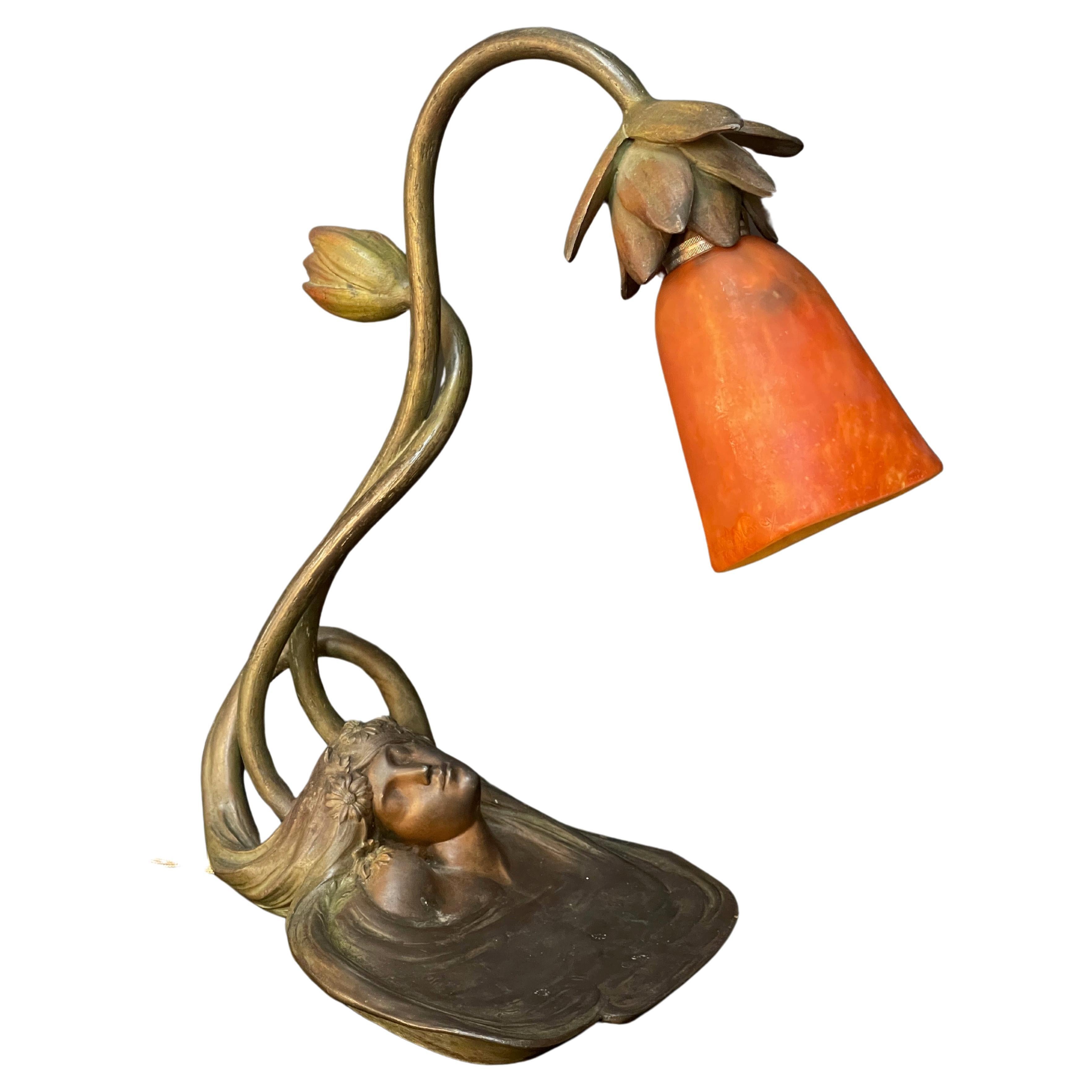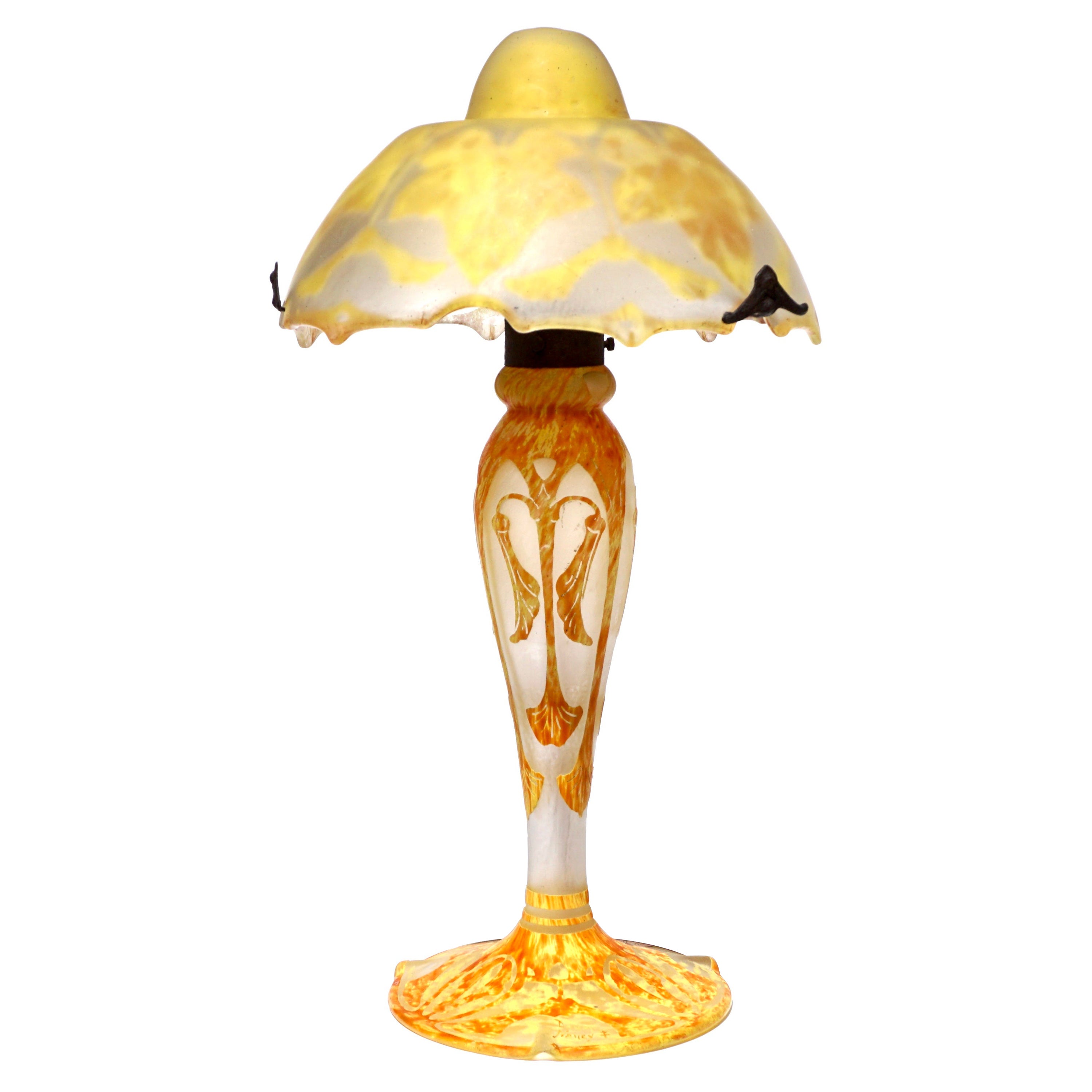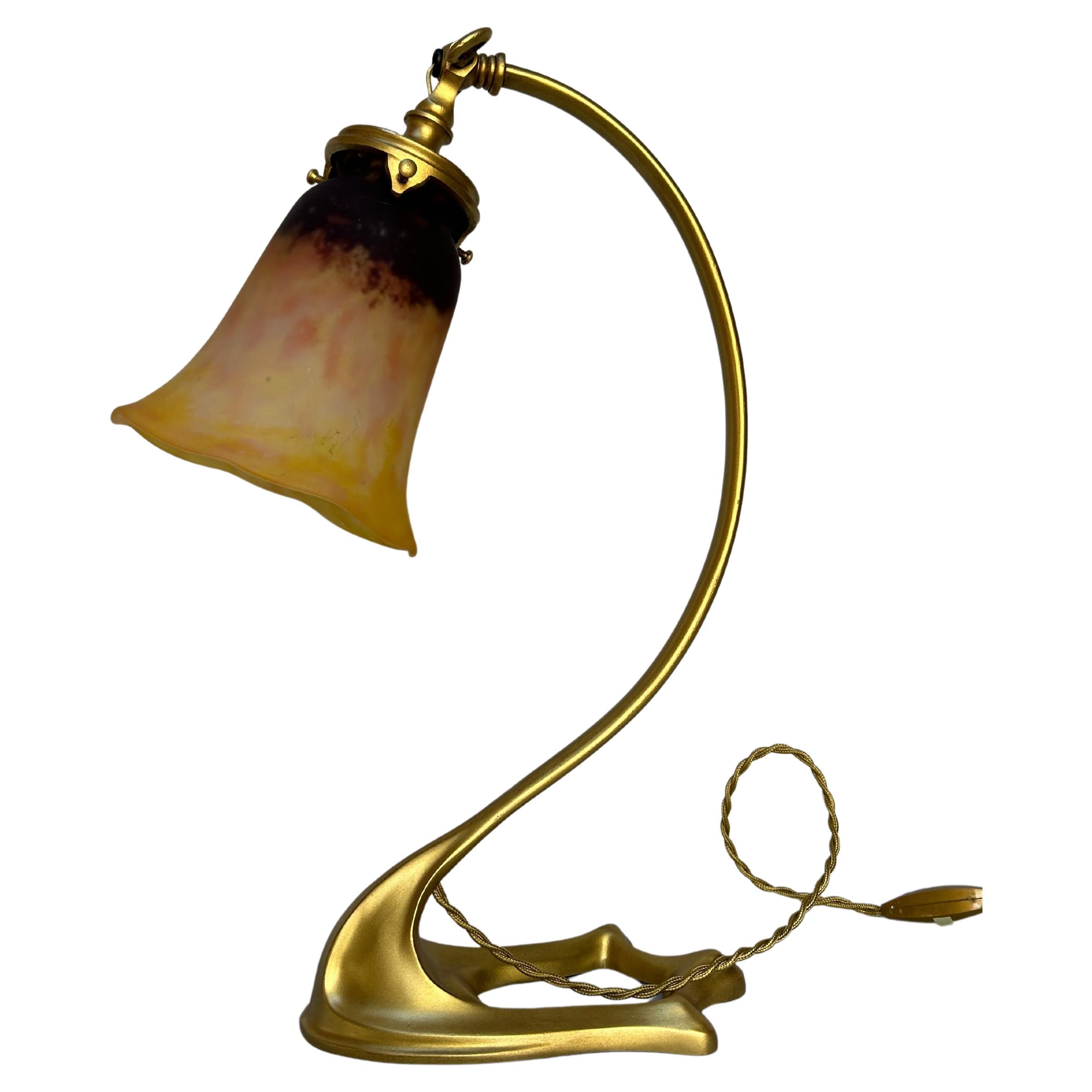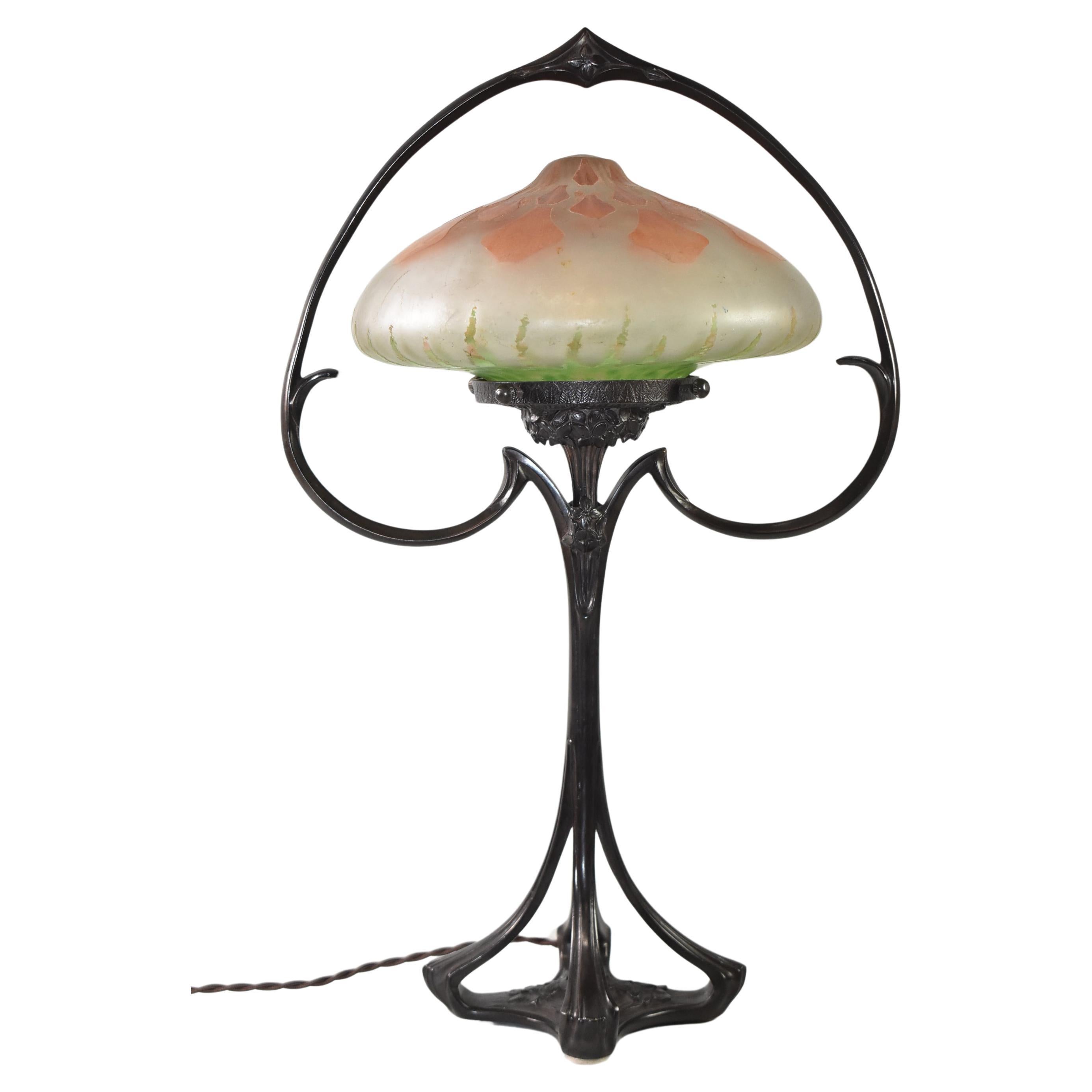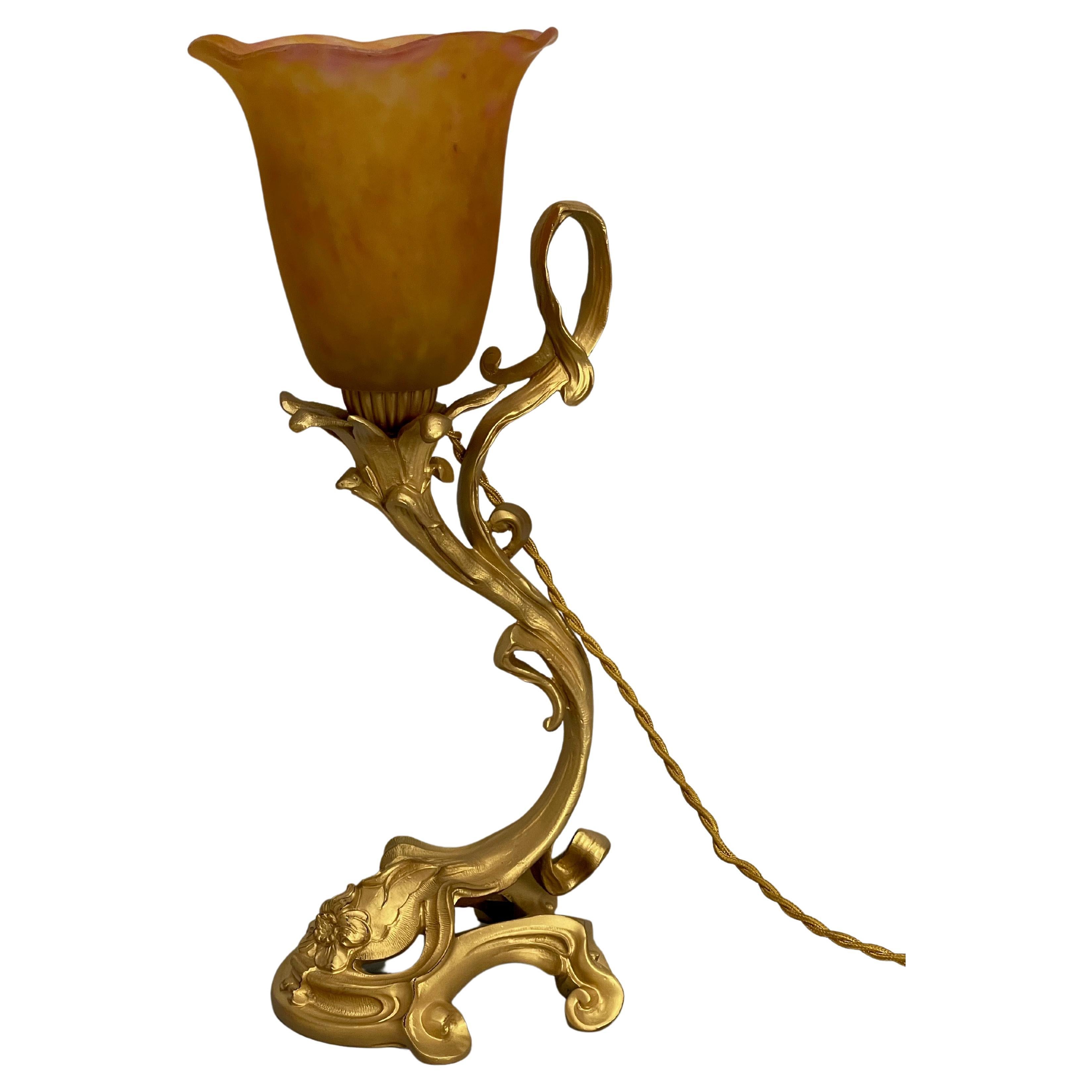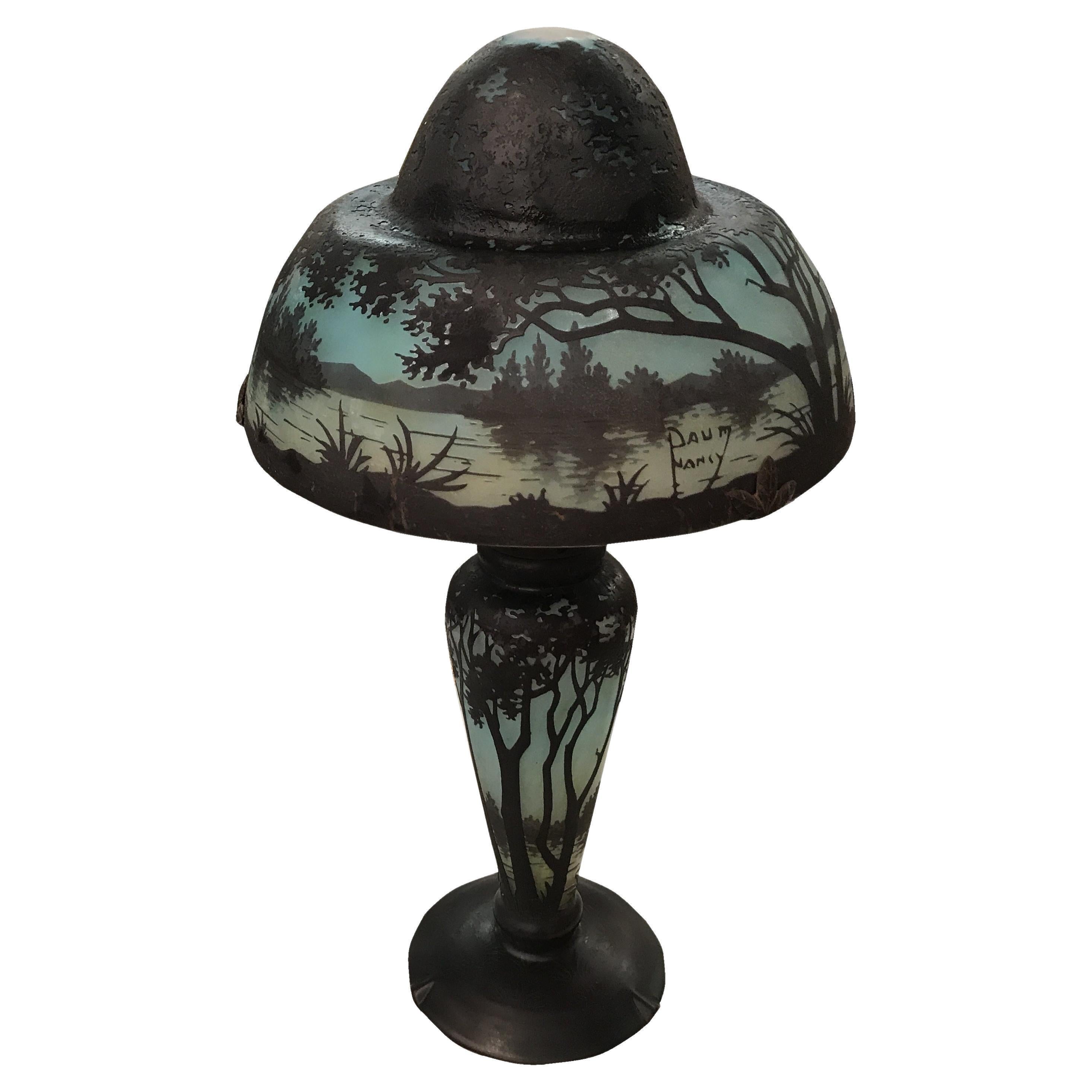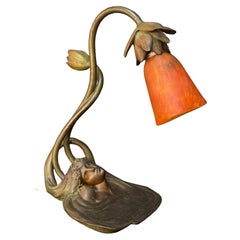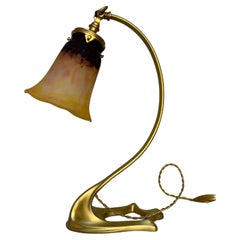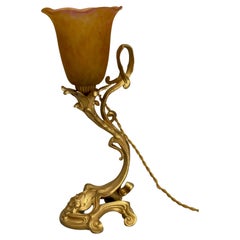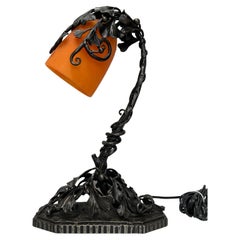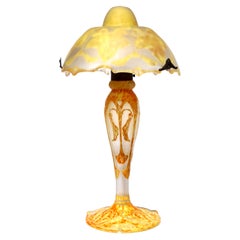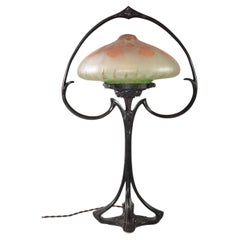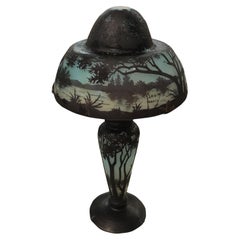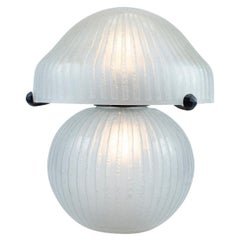Daum Nancy Art Nouveau Lamp
Acerca del artículo
- Creador:Daum (Fabricante)
- Dimensiones:Altura: 40,5 cm (15,95 in)Anchura: 30 cm (11,82 in)Profundidad: 21 cm (8,27 in)
- Fuente de energía:Cableado
- Tensión:110-150v,220-240v
- Pantalla:Incluido
- Estilo:Art Nouveau (Del período)
- Materiales y técnicas:
- Lugar de origen:
- Época:1910-1919
- Fecha de fabricación:1910
- Estado:
- Ubicación del vendedor:NANTES, FR
- Número de referencia:1stDibs: LU7403245157052
Daum
Para los coleccionistas, Daum es un nombre de primera fila entre los fabricantes franceses de vidrio artístico , junto con los de Émile Gallé y René Lalique. Dirigida en sus primeras décadas por los hermanos Auguste (1853-1909) y Antonin Daum (1864-1931), la empresa, con sede en la ciudad de Nancy, estableció su reputación en el periodo Art Nouveau, y más tarde adoptó con éxito el estilo Art Déco .
En 1878, el abogado Jean Daum se hizo con la propiedad de una cristalería como pago de una deuda e instaló a sus hijos como propietarios. Al principio, Daum fabricaba vidrio para usos cotidianos, como ventanas, relojes y vajillas , pero el éxito que obtuvo Gallé en la Exposición Universal de París 1889 -el escaparate internacional para el que se construyó la Torre Eiffel- inspiró a los hermanos Daum para empezar a fabricar piezas de vidrio artístico. Produjeron obras populares de vidrio camafeo, una técnica decorativa en la que una capa exterior de vidrio se graba al ácido o se talla para revelar la capa inferior, pero Daum se hizo más conocida por las vasijas y las esculturas en pâte de verre, un meticuloso método en el que el vidrio coloreado finamente molido se mezcla con un aglutinante, se coloca en un molde y luego se cuece en un horno.
Aunque los primeros vidrios de Daum nunca fueron firmados por artistas individuales, la empresa empleó a algunos de los maestros del estilo Art Nouveau naturalista y asimétrico, como Jacques Grüber, Henri Bergé y Amalric Walter (cuyo nombre de pila suele escribirse mal). Daum también colaboró con el diseñador de muebles y objetos metálicos Louis Majorelle, que creó monturas de hierro forjado y latón para jarrones y lámparas de mesa. En la década de 1960, Daum encargó a artistas plásticos, sobre todo a Salvador Dalí y al escultor César Baldaccini, que diseñaran piezas de vidrio. Como puedes ver en las obras que se ofrecen en 1stDibs, Daum ha albergado una lista asombrosamente rica de espíritus creativos y hoy es una empresa estatal que fabrica figuritas de pâte de verre.
- EnvíoRecuperando presupuesto…Envío desde: NANTES, Francia
- Política de devolución
Más de este vendedor
Ver todoprincipios del siglo XX, Francés, Art Nouveau, Lámparas de mesa
Spelter
principios del siglo XX, Francés, Art Nouveau, Lámparas de mesa
Bronce
siglo XX, Francés, Art Nouveau, Lámparas de mesa
Bronce
Vintage, Década de 1920, Art Decó, Lámparas de mesa
Hierro forjado
mediados del siglo XX, Francés, Art Decó, Lámparas de mesa
Hierro forjado
principios del siglo XX, Francés, Art Nouveau, Jarrones
Vidrio
También te puede gustar
Vintage, Década de 1920, Francés, Art Decó, Lámparas de mesa
Vidrio artístico
Antiguo, Principios del 1900, Francés, Art Nouveau, Lámparas de mesa
Bronce
Antiguo, Principios del 1900, Francés, Art Nouveau, Lámparas de mesa
Vidrio
Vintage, Década de 1930, Francés, Art Decó, Lámparas de mesa
Hierro forjado
Vintage, Década de 1910, Francés, Art Nouveau, Lámparas de mesa
Vidrio artístico
Vintage, Década de 1920, Francés, Art Decó, Lámparas de mesa
Vidrio
